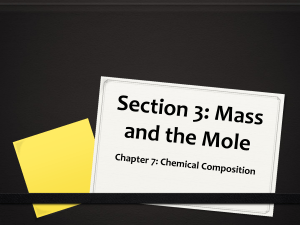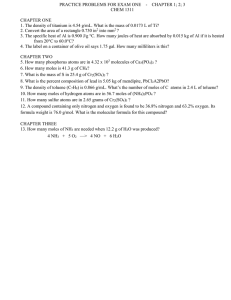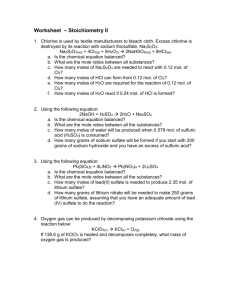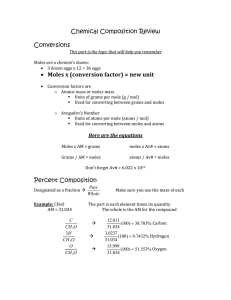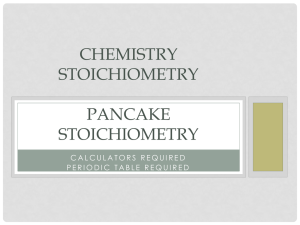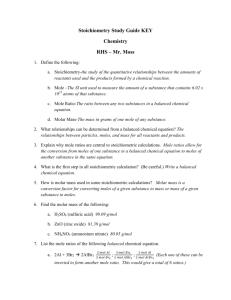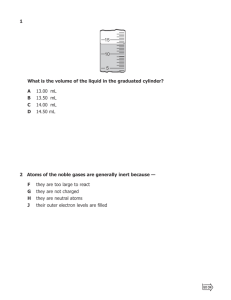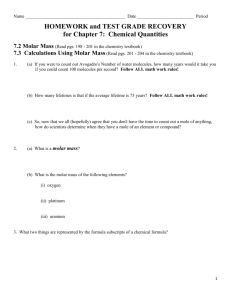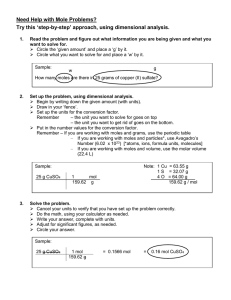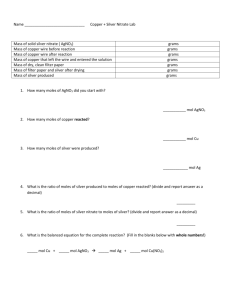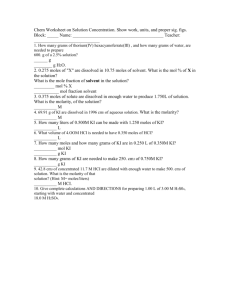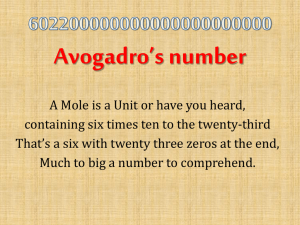Moles - s3.amazonaws.com
advertisement
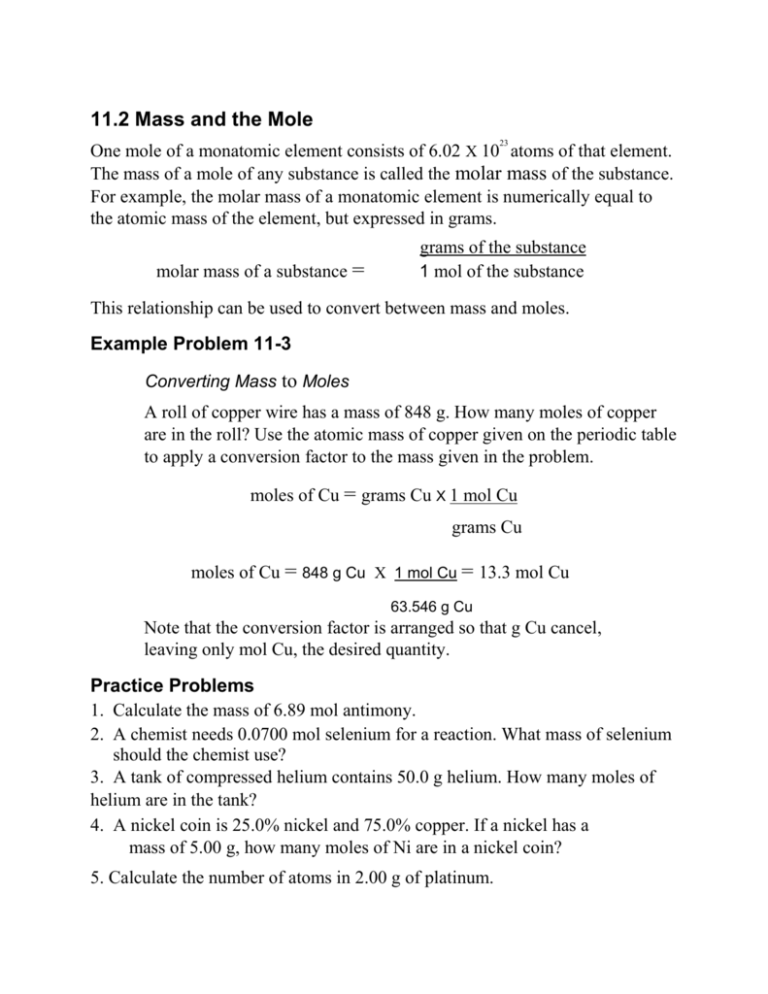
11.2 Mass and the Mole 23 One mole of a monatomic element consists of 6.02 X 10 atoms of that element. The mass of a mole of any substance is called the molar mass of the substance. For example, the molar mass of a monatomic element is numerically equal to the atomic mass of the element, but expressed in grams. molar mass of a substance = grams of the substance 1 mol of the substance This relationship can be used to convert between mass and moles. Example Problem 11-3 Converting Mass to Moles A roll of copper wire has a mass of 848 g. How many moles of copper are in the roll? Use the atomic mass of copper given on the periodic table to apply a conversion factor to the mass given in the problem. moles of Cu = grams Cu X 1 mol Cu grams Cu moles of Cu = 848 g Cu X 1 mol Cu = 13.3 mol Cu 63.546 g Cu Note that the conversion factor is arranged so that g Cu cancel, leaving only mol Cu, the desired quantity. Practice Problems 1. Calculate the mass of 6.89 mol antimony. 2. A chemist needs 0.0700 mol selenium for a reaction. What mass of selenium should the chemist use? 3. A tank of compressed helium contains 50.0 g helium. How many moles of helium are in the tank? 4. A nickel coin is 25.0% nickel and 75.0% copper. If a nickel has a mass of 5.00 g, how many moles of Ni are in a nickel coin? 5. Calculate the number of atoms in 2.00 g of platinum. 6 6. How many sulfur atoms are in a metric ton (1.00 X 10 g) of sulfur? 23 7. How many °grams of mercury are in 1.19 X 10 atoms of mercury? 19 8. What is the mass in grams of 3.01 X 10 atoms of iodine? 9. The EPA limit for lead in the water supply is 15 parts per billion by mass. Calculate the number of lead ions present in 1.00 kg of water that is at the EPA limit for lead. http://www.drrickmoleski.com/Synopsis-TheMole.pdf




